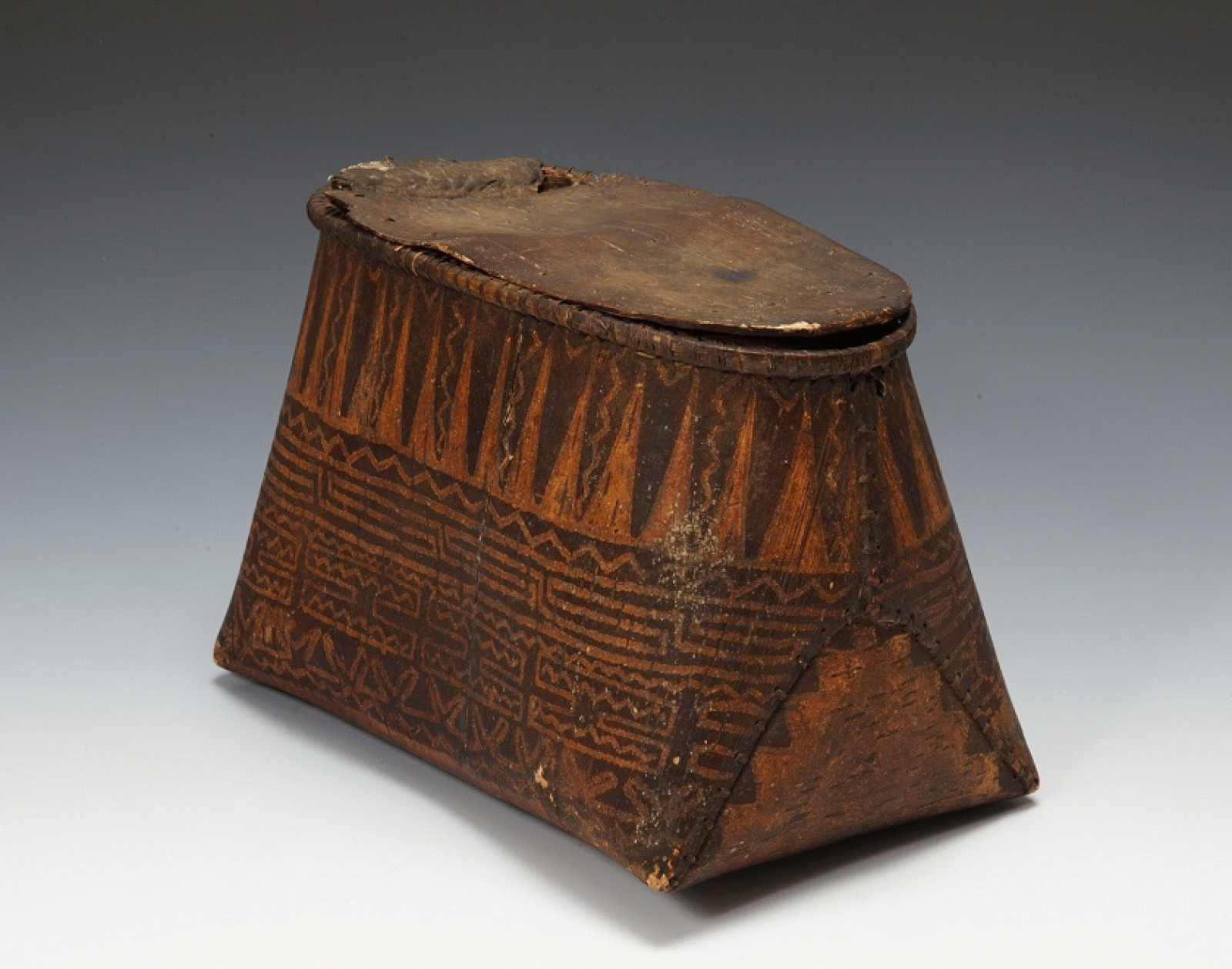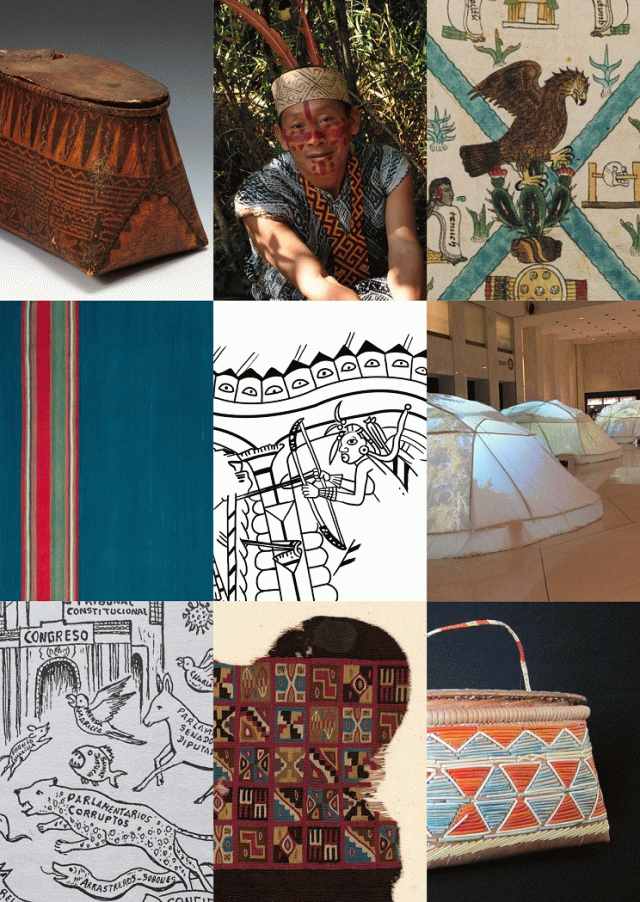Lecture series
Ruth Phillips:
Vision Plays: Anishinaabe Women’s Arts of Power and Empowerment
Within the framework of the KHI Amerindian Lecture Series

Anishinaabe artist, Mokuk with sgraffito work, Hood Museum of Art, Dartmouth College, New Hampshire
This lecture will explore the epochal shift from an ancient iconography that represented the other-than-human beings who populate the Indigenous North American cosmos to an innovative floral iconography introduced through European trade and settlement. Although it focuses on art forms made by Anishinaabe women living the vast territories surrounding the Great Lakes region of North America its potential relevance is broader, for a parallel creative transformation was repeated across the continent in many specific local artistic contexts. During the era of salvage ethnography, anthropologists debated the specific origins of floral imagery but generally regarded it as decorative rather than meaningful, as evidence of assimilation and loss of authenticity. The first part of the discussion offers an interpretation of the ancient traditions informing Anishinaabe women’s sgraffito arts in birchbark in which visual play with positive and negative space and with geometric and figurative designs expressed possibilities of transformation and empowerment. In the second part of the talk, it argues that the new floral iconography not only continued to preserve the power of visions, but was also a means of economic self-empowerment for women within the oppressive conditions of settler-colonial society.
Museum storages are filled with examples of Anishinaabe women’s arts—bead embroidered garments worn in festival and ceremony, mats and bags used in ritual and daily life woven of natural fibers and trade wool, birchbark containers ornamented with a sgraffito technique or dense insertions of dyed porcupine quills. The economic importance assumed by these productions increased steadily through the nineteenth and early twentieth centuries, as the Anishinaabeg were dispossessed of their lands and hunting and fishing grounds. Settlers, trade goods, and the advent of tourism introduced new markets and sources of artistic stimulation—most notably the floral images that adorned manufactured cloth, pottery, and other items—and which had itself been introduced into Europe in earlier centuries from India and elsewhere. By the second half of the nineteenth century, the attraction of this new imagery had combined with missionary suppression of traditional spirituality to replace earlier iconographic traditions.
Ruth Phillips is Canada Research Chair and Professor of Art History Emerita at Carleton University, Ottawa. Originally trained in African art history, she has taught and written primarily on Indigenous North American art history and critical museology. Her recent publications include Native North American Art (2nd edition) with Janet Catherine Berlo; Museum Pieces: Toward the Indigenization of Canadian Museums; and Mapping Modernisms: Art, Indigeneity, Colonialism, co-edited with Elizabeth Harney. She served as director of the UBC Museum of Anthropology and is a fellow of the Royal Society of Canada.
The KHI Amerindian Lecture Series 2021 is conceived as a forum to reflect on Indigenous arts/visual cultures and aesthetic practices created on the American continent, past and present. It is organized by Sanja Savkić Šebek (KHI in Florenz – Max-Planck-Institut & Humboldt-Universität zu Berlin) & Bat-ami Artzi (Dumbarton Oaks) within the framework of the Department Gerhard Wolf & the 4A Laboratory: Art Histories, Archaeologies, Anthropologies, Aesthetics.
07 October 2021, 5:30pm
The event takes place online.
To participate please register in advance via Zoom:
https://zoom.us/meeting/register/tJ0td-urpz0sG9YmXnADo9z0liUMyd5uqhVZ
After registering, you will receive a confirmation email containing information about joining the meeting.
Notice
This event will be documented photographically and/or recorded on video. Please let us know if you do not agree with the Kunsthistorisches Institut in Florenz using images in which you might be recognizable for event documentation and public relation purposes (e.g. social media).




